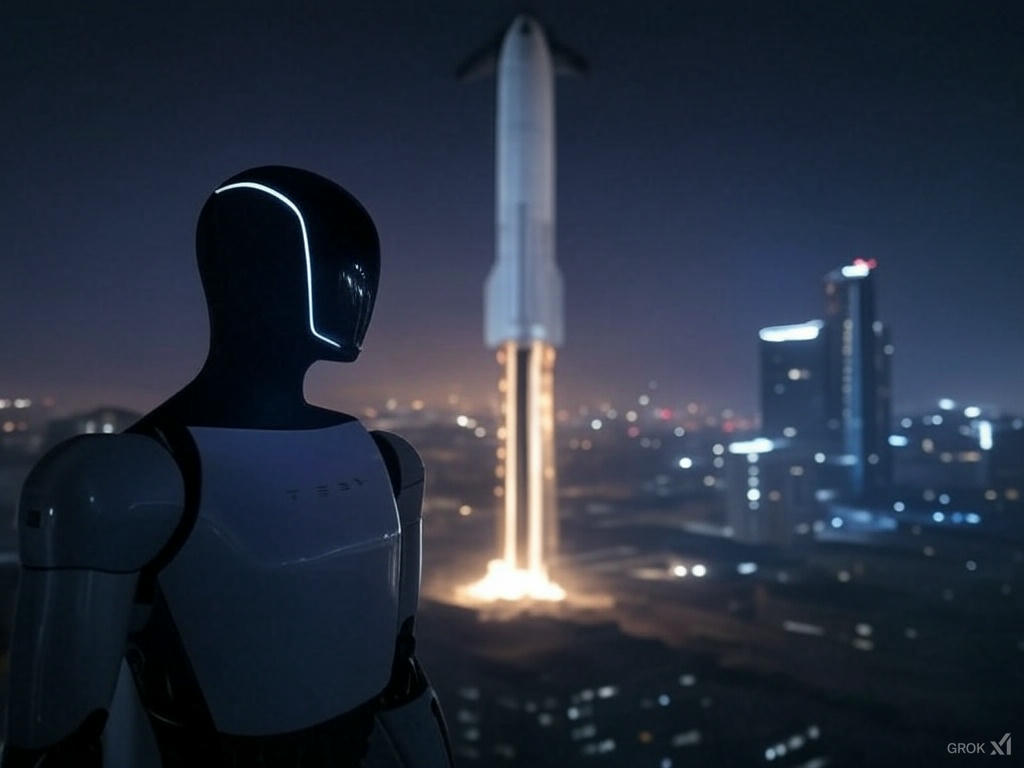
A deep dive into the latest breakthroughs in robotics, AI, and space tech, plus what they mean for our planet’s future.
Hey there, tech enthusiasts—let’s dive right into the good stuff. Today, we’re unpacking the latest breakthroughs in robotics, AI, and space tech, pulling from a deep dive into what’s happening right now and what’s on the horizon. No fluff, just the real deal: hard facts, current events, and the implications that’ll make you think. Ready? Let’s roll.
Robotics: The Bots Are Taking Over (And It’s Pretty Cool)
Robots aren’t just factory fixtures anymore—they’re smart, independent, and everywhere. We’re talking autonomous machines that adapt on the fly, reshaping industries and daily life.
Autonomy Rules
AI has turned robots into decision-makers. Self-driving cars are tackling city streets (with fewer fender benders than you’d think), robotic surgeons are nailing precision ops, and humanoid bots like Tesla’s Optimus are gearing up for warehouse work or even helping around the house. China’s betting big—its Ministry of Industry and Information Technology predicts mass-produced humanoid robots by 2025, hitting logistics, healthcare, and elder care hard [9]. Asia’s about to be bot central.
Then there’s the quieter revolution: collaborative robots (cobots). These sensor-packed machines work alongside humans, handling delicate tasks without smashing anything—or anyone [10]. Picture a factory line where robots and people vibe together, boosting output while keeping it safe.
What’s It Mean?
By 2025, Asia’s expected to host 70% of industrial robots, turning places like Shenzhen into manufacturing powerhouses [14]. In healthcare, surgical bots are slashing recovery times and errors—lives saved, costs cut [12]. But here’s the kicker: automation could zap millions of repetitive jobs, especially in manufacturing and logistics, unless we reskill fast [11].
AI: Smarter Than Ever
AI’s the brain behind the brawn, and it’s flexing in ways that’ll blow your mind—and maybe raise some eyebrows.
Cutting-Edge Smarts
Natural language models are next-level. OpenAI’s o1 can tackle complex science or legal puzzles [1], while multimodal systems like Sora juggle text, video, and audio—think an AI that scripts, visuals, and edits a film solo [5]. Autonomous agents, like Anthropic’s Claude, are booking appointments or debugging code without you asking twice [3]. By 2025, these helpers could be running your life (in a good way, hopefully).
AI’s also crushing it in specifics: spotting cancers before doctors, predicting stock dips, even steering military drones [4]. It’s everywhere, and it’s fast.
The Catch
Privacy’s a mess—AI thrives on your data, tracking every click [6]. Bias is real too; bad data in, bad calls out—think unfair profiling or fake news on steroids [7]. And with OpenAI eyeing military deals, we’re looking at AI that might pick targets as easily as it picks playlists [6]. Big debates are brewing for 2025.
Space Industry: Earth’s New Frontier
Space isn’t just rocket launches—it’s a booming sector tackling earthly problems with cosmic solutions.
Satellite Surge
Tiny CubeSats are the MVPs here. SpaceX’s Starlink is beaming internet to remote spots, with thousands more launches planned by 2025 [16]. It’s powering precision farming, disaster alerts, and connectivity in places like rural Africa—digital gaps are shrinking fast.
Lunar Ambitions
NASA’s Artemis program wants humans back on the Moon by 2027, maybe with a permanent base [18]. Why? Ice in lunar craters could become fuel or water, slashing deep-space costs. Companies are eyeing rare metals and solar power too—a lunar gold rush with big geopolitical stakes.
Earth Benefits
Satellites track deforestation, CO2, and disasters [19], while the space economy’s slated to hit $1.8 trillion by 2035 [22]. Jobs and industries are coming—but so is space junk, threatening those shiny new networks [20].
Big Picture: Where Are We Headed?
Let’s zoom out. These aren’t just cool toys—they’re rewriting how we live, work, and fight.
- Economy: Asia’s robot and AI surge is shifting power east [21]. Space tech’s opening markets in Africa and beyond, but job losses loom without reskilling [22].
- Geopolitics: AI cyberwars, robotic drones, and lunar grabs are heating up [24]. Tech’s a weapon, and 2025 could get tense.
- Environment: AI’s greening energy (45% renewable by 2025?) [25], and space data’s fighting climate change [26]—but AI’s power hunger and rocket emissions are headaches.
- Us: Less grunt work, more privacy creep. Will we embrace this tech or push back?
Final Thoughts
Robotics, AI, and space tech are coding our future—Asia’s bot factories, lunar mines, and all. But we’re the ones steering. Will it be progress or chaos? Something to chew on.
Thanks for riding along. Let’s keep digging into this wild world together.
References
- What's next for AI in 2025 - MIT Technology Review
- 6 AI trends you’ll see more of in 2025 - Microsoft News
- 5 Predictions for AI in 2025 - TIME
- 8 AI and machine learning trends to watch in 2025 - TechTarget
- What’s next for AI in 2025? - MIT Technology Review
- 6 AI trends you’ll see more of in 2025 - Microsoft News
- Top 5 Robot Trends 2024 - International Federation of Robotics
- The Future of Robotics in 2025 - GeeksforGeeks
- Top 5 global robotics trends for 2025 - Niryo
- The Robotics Trends to Watch in 2025 - Duro Labs
- Exploring the Latest Advancements in Advanced Robotics for 2025 - First Ignite
- Top 10 Space Industry Trends & Innovations in 2021 - StartUs Insights
- Trends Transforming the Space Industry in 2025 - Satellite World
- Outer space in 2030 - McKinsey
- Top 5 global robotics trends for 2025 - AIUT
- Space is booming. Here's how to embrace the $1.8 trillion opportunity - World Economic Forum
- Top 15 Global Trends For 2025 - Forbes
- Top 10 Space Exploration Trends for 2025 - Spherical Insights
- Global Risks Report 2025 - World Economic Forum